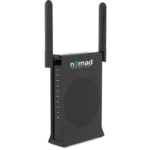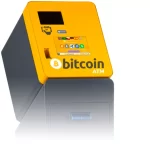
Best in Rural Internet: Nomad Internet in Spotlight
A steady internet connection has become one of the most important aspects of modern homes. However, residents in distant places may still require assistance in selecting a reputable internet service provider.
For individuals who live in urban regions, selecting the best internet service provider can be as simple as deciding which of the different companies and possibilities to use. Rural internet consumers, on the other hand, frequently have only a few connection providers to select from, and these providers may require additional connectivity alternatives. However, a growing number of rural internet service providers are making their services available. Rural internet customers now have more options than before.
Now that you have more options, we’ve put together a list of the best internet providers for rural places to help you decide which is best for you.

Content
Premier Internet Choices for Rural Areas in 2024
Nomad Internet: Nomad Internet is the top high-speed internet provider for distant areas. The company ensures that you stay connected, no matter how remote your location, without utilizing advanced technology.
Nomad Internet’s unique approach to connectivity has made it America’s top choice for rural internet access. Unlike other ISPs, Nomad Internet offers C-band national coverage, allowing for high-speed, unrestricted internet access even in distant locations.
Nomad Internet focuses in cutting-edge technology and outstanding customer service. When it comes to latency, Nomad Internet outperforms almost every other ISP in America, offering the lowest latency among its competitors.
T-Mobile Home Internet: T-Mobile Home Internet is available whenever a 5G or 4GLTE cellular connection is activated. While 5G coverage may not be available in some isolated places, many people may receive a strong signal and use all of the services included in the company’s connection package. T-Mobile offers a single plan with connection speeds ranging from 33 to 245 Mbps. That speed may need to be improved to accommodate large-scale multiplayer online gaming. However, it is fast enough for most families’ casual internet browsing, online meetings, gaming, and light streaming needs.
T-Mobile’s guaranteed monthly pricing for its connection service will never change; it is $55 per month, or $50 if you choose autopay. There are no data limits or contracts, and the service is available in many areas across the fifty states. However, connection speeds are not guaranteed and can vary significantly depending on location, signal quality, and cellular traffic.
HughesNet: HughesNet is a top satellite internet company that provides service almost anyplace a satellite signal can reach. While the speed of technology is now limited, it is increasing. It can currently achieve rates of up to 50 Mbps, which is adequate for most families’ casual internet browsing, gaming, online meetings, and streaming. HughesNet has four plan alternatives for rural clients, with differences depending on data limitations rather than connection speed. All connections through the company vary from 15 to 50 Mbps. Data plans limit consumption to 15, 30, 45, and 75 gigabytes per month.
Installation costs $99. Customers who buy a HughesNet satellite internet modem for $450 are not charged that amount. Customers can pay for installation and rent the modem for $15 a month.
AT&T Internet: Rural consumers in locations where AT&T Internet is widely available can choose from a variety of package options. AT&T has up to ten plan options, ranging from modest to superfast connection speeds. Customers in locations that still need to be wired for fiber optic connections may have up to five options, including the company’s DSL. Customers may be able to connect to AT&T’s fixed wireless network despite the lack of internet infrastructure in their current location. The fixed wireless service costs $69.99 per month and provides 10 Mbps download and 1 Mbps upload speeds.
Customers can bundle any AT&T internet package with other business services like mobile phones or DIRECTV. AT&T internet data is limited to just over 1,000 GB per month, with an unlimited data package available for an extra $30 per month.
Kinetic: Kinetic Internet, which operates in 18 states, brings fiber optic technology to remote areas. Kinetics’ infrastructure includes DSL, fiber, and hybrid connections. This means that high-speed internet is now available in locations that were previously only accessible through sluggish, limited, or expensive connections. Kinetic’s expanding service zone offers three package options ranging from 500 Mbps to 8 Gbps connectivity. The 500 Mbps and 1 Gbps plans cost $39.99 each for the first three months.
After the first three months, the 1 Gbps service will be $69.99 per month. After the first year of service, all three plans will face price increases. Price increases are not reported and vary by location.
Verizon 5G: Verizon 5G wireless internet is based on a new high-speed 5G cellular network. Residential users can choose from two internet connection options that can be combined with Verizon’s other communication services to save money and enhance convenience. The company’s 5G network serves 47 states, with the exception of Alaska, New Hampshire, and Vermont. In states where the service is accessible, you can connect anywhere Verizon’s 5G signal reaches. Customers in areas where 5G is not available can still connect using the 4G LTE network. However, download speeds plummet from 85 Mbps to roughly 70.
Breakthrough Rural Connectivity Services
The number of rural internet service providers is increasing. In addition to our top five recommendations, several other companies provide viable solutions for rural internet users. Google Fiber Google Fiber now serves 18 states, including phone and television service. While the majority of Google’s service locations are in metropolitan regions, the company’s network extends to some rural homes. The company provides four connection plans ranging from 1 to 8 Gbps, beginning at $70 and including installation, equipment, and no data limits.
Spectrum Chart Spectrum provides high-speed internet connection beginning at $49.99. The company provides services in 40 states via a hybrid coax and fiber communication network. Spectrum provides three basic plan options, with add-on services like as skilled installation and built-in Wi-Fi connectivity available for an additional fee. The three options provide speeds of 300, 500, and 1,000 Mbps.
Frontier’s 500 Mbps fiber hybrid internet connection is available with autopay for as low as $44.99 per month. Frontier offers services in 29 states, including many rural locations, with a 1 Gbps plan, a 2 Gbps option for less than $100 with autopay, and a 5 Gbps package that includes a high-performance router for a monthly fee.
What to Look for in Rural Internet Providers
The way you use the internet determines which ISP is most suited to your home and family. Working from home may need video conferencing, which demands faster bandwidth and shorter lag times than those who solely use the internet to communicate. Gamers have higher expectations of their internet service provider than the average user.
Connection: Whether you have a bundled plan or an internet-only subscription, how you connect to your ISP has a significant impact on the service’s usefulness. Depending on where you live, your options include fiber optic, DSL, cable, or cellular connections, all of which can give fast speeds and dependability under the correct conditions. Choosing one is sometimes a compromise that gives you the best of what you need while sacrificing something less important.
Distance: When electrical signals must travel long distances along a wire, such as in a DSL or cable internet connection, the signal may slow down. Not only does delay increase with distance, but signal strength may decrease. If wired service is your sole option, look for a supplier who offers services as close to your location as possible. Fiber optic internet connections are unique in that they are (more or less) resistant to many of the problems associated with traditional wired service.
Speed: Those who use the internet for work or recreation require a fast and dependable internet connection. However, casual internet users may grow dissatisfied if their connection speeds cause pages to load slowly. About 12 Mbps is adequate for connecting a single device to read the news and use social media. Families will need at least 25 Mbps, while people who work from home or love online gaming should look for internet providers with speeds more than 50 Mbps. Serious users benefit most from rates greater than 100 Mbps.
Five Internet Choices for Rural Communities
Rural communities may have limited internet access options, but this is changing as networks expand and technology evolves.
1. Cable: Cable internet is a wired internet service that connects your home to the internet via cable television transmission wires. Many cable internet consumers bundle their television and internet services with a single supplier. Cable internet is available in many locations, but not all.
2. Satellite: Satellite internet service is advertised as being available anywhere and not limited by cables. Instead, communications are transmitted to and from orbiting satellites. Satellite communication has always been slow and prone to delay. Although connections continue to develop and improve as technology advances, more work has to be done in many regions.
3. Fiber: Fiber optic internet provides rapid download and upload speeds across vast distances via a physical connection, if the service is available in your area. Fiber internet is now available in some rural areas, but it remains a distant dream for many.
4. DSL: Your existing phone line can carry a DSL internet signal. DSL, as opposed to the now-defunct dial-up internet, provides more bandwidth and quicker speeds via a continuous connection.
5. Cellular and 5G: Your phone’s mobile hotspot connects to cellular networks. Home cellular internet operates in a similar manner, allowing for high-speed, private connections by connecting to a cellular signal via a home router. Although 5G service can provide fast speeds, you must live within range of the nearest cell tower to ensure a constant connection.
Additional Rural Internet Connectivity Choices
Though there are several ways to get signals in remote areas, there are two major types of internet connection. Wired Internet Wired internet connections are very dependable because of their physical connection to the ISP. DSL, cable, and fiber optic connections are all wired technologies with fast speeds and dependability. Rural clients’ wired internet options are typically determined by what their ISP offers in their location.
Wireless Internet Wireless internet, as the name implies, consists of a device that exchanges signals with an internet service provider. The device could be a smartphone, a home router, or a satellite antenna. Wireless internet, which is available practically everywhere, has varying speeds based on the type of service and signal quality in your area.
Deciding on the Ideal Internet Bandwidth
Rural internet connection speeds vary from 5 Mbps to 1 Gbps. Speeds of up to 10 Gbps can be achieved using a rural fiber optic connection. Connection speed has an impact on how many users and devices can access the service at the same time. The type of online activity determines the required speed for continuous internet access.
Final Takeaways
Choosing the fastest internet service in rural area boils down to your unique requirements. Nomad Internet, T-Mobile, AT&T, Kinetic, and Verizon all provide reliable internet service in rural areas. As a result, customers must carefully analyze their options before deciding which one best suits their needs. In our humble opinion, Nomad Internet is a good place to begin because, not only are their services designed to bring internet connectivity to even the most remote regions, but the numerous technological features they provide make them one of the most cost-effective internet service providers in America.

Alvin Newman is an expert in all things technology. He enjoys writing blogs about how to use the latest software and hardware on the market, while also providing advice for using existing technology more effectively. His favorite pastimes include reading comic books and playing video games.












